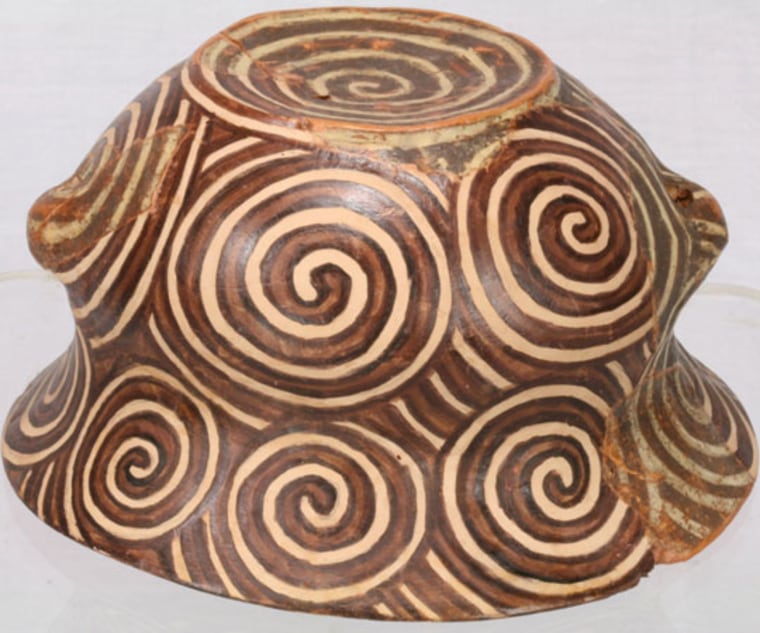An egalitarian Neolithic Eden filled with unique, geometric art flourished some 7,000 years ago in Eastern Europe, according to hundreds of artifacts on display at the Vatican.
Running until the end of October at the Palazzo della Cancelleria in the Vatican, the exhibition, "Cucuteni-Trypillia: A Great Civilization of Old Europe," introduces a mysterious Neolithic people who are now believed to have forged Europe's first civilization.
Little is known about these people — even their name is wrapped in mystery.
Archaeologists have named them "Cucuteni-Trypillians" after the villages of Cucuteni, near Lasi, Romania and Trypillia, near Kiev, Ukraine, where the first discoveries of this ancient civilization were made more than 100 years ago.
The excavated treasures — fired clay statuettes and op art-like pottery dating from 5000 to 3000 B.C. — immediately posed a riddle to archaeologists.
"We do not know the meaning of those painted symbols, and what is the significance of those zoomorphic and anthropomorphic statuettes. Everything seems to be wrapped in mystery.
"Most of all, we do not know how these people treated their dead. Despite recent extensive excavations, no cemetery has ever been found," Lacramioara Stratulat, director of the Moldova National Museum Complex of Iasi, told reporters at a news conference recently at the Vatican.
Before their culture mysteriously faded, the Cucuteni-Trypillians had organized into large settlements. Predating the Sumerians and Egyptian settlements, these were basically proto-cities with buildings often arranged in concentric circles.
They extended over 350,000 square kilometers (135,000 square miles) in what is now Romania, Ukraine and Moldova.
The Neolithic buildings often featured walls and ceilings decorated with drawings painted in black and red. Inside, the houses were filled with pottery and statuettes whose quasi-modern design has become the Cucuteni-Trypillians's most identifiable trademark.
This unique artistic production, dominated by repeating lines, circles and spirals, amazingly echoes modern op art, also known as optical art, which is a genre of visual that makes use of geometric shapes and optical illusions. The unusual art offers the best glimpse into this mysterious civilization.
None of the enigmatic statuettes seem fearsome or fearful. The rare male statuettes have faces often covered by masks, while the abundant female statuettes are gracious and mask-free, with tattooed bodies and long feet.
There are no chained slaves or sacrificial figures — a sign of a rather egalitarian culture, according to historians.
The pottery's obsessive spiral and circle patterns could also help explain another strange feature of this culture.
"We do not know why, but all of the 4,000 Cucuteni-Trypillians settlements were intentionally burned," said Sergiy Krolevets, director of the National History and Culture Museum of the Republic of Moldova.
One explanation is that the Cucuteni might have seen the world as cyclical — a concept they might have expressed in the circles they painted on their pottery.
According to this hypothesis, every some 60-80 years they would sacrifice whole cities by intentionally burning thousands of their houses. Then they would move to create another settlement.
Whatever the reason behind it, the practice required an extremely well coordinated, centrally organized society.
"Getting to know more about this civilization is very important to us ... We are proud to have brought the world's greatest Neolithic culture," said Romeo Dumitrescu, president of the Cucuteni pentru Mileniul III foundation in Bucharest.
